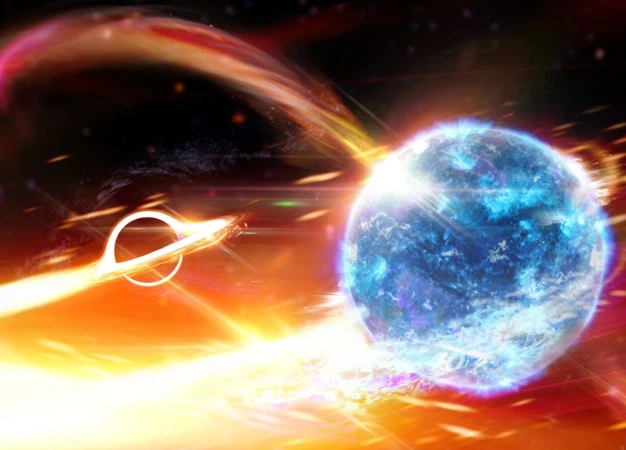Massive stars have always captivated astronomers and astrophysicists with their spectacular end. When these colossal celestial bodies reach the end of their life cycle, they undergo a catastrophic event known as a supernova. This explosive phenomenon gives birth to two intriguing and mysterious cosmic entities: black holes and neutron stars. Both black holes and neutron stars possess unique characteristics and exhibit peculiar behaviors that continue to puzzle scientists. In this article, we will delve into the fascinating world of massive stars and explore the contrasting nature of black holes and neutron stars, shedding light on their formation, properties, and implications. Join us on this cosmic journey as we navigate the perplexing choices of massive stars reaching the end of their stellar evolution.
Contents
- What are Massive Stars?
- The Supernova Event
- Black Holes: The Ultimate Gravitational Collapse
- Neutron Stars: The Dense Stellar Corpse
- Black Holes vs. Neutron Stars
- Conclusion
-
Frequently Asked Questions
- 1. How do massive stars differ from smaller stars?
- 2. What causes the formation of massive stars?
- 3. What is a supernova?
- 4. How do black holes form?
- 5. What are the properties of black holes?
- 6. What is a neutron star?
- 7. How are neutron stars formed?
- 8. What sets black holes and neutron stars apart?
- 9. Can black holes and neutron stars merge?
- 10. Are black holes and neutron stars dangerous to Earth?
- References
-
Frequently Asked Questions
- FAQ 1: Can massive stars become black holes?
- FAQ 2: What is a supernova event?
- FAQ 3: Do all massive stars die in a supernova?
- FAQ 4: How are black holes formed?
- FAQ 5: What are the properties of black holes?
- FAQ 6: Can anything escape from a black hole?
- FAQ 7: How are neutron stars formed?
- FAQ 8: What are the unique aspects of neutron stars?
- FAQ 9: How do black holes and neutron stars differ in mass and density?
- FAQ 10: What is the main difference between black holes and neutron stars?
- References
- Read More
What are Massive Stars?
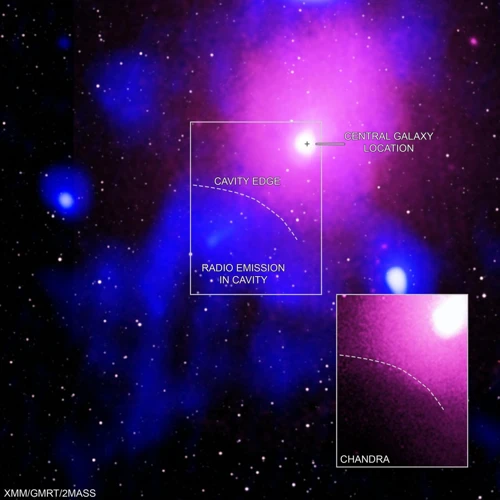
Massive stars are a class of stars that often capture the imagination with their incredible size and immense energy output. These cosmic giants are several times larger than our own Sun and can shine millions of times brighter. They are born in dense regions of interstellar clouds, where gravity causes the gas and dust to collapse under its own weight, igniting the nuclear fusion process at their core. The formation of a massive star begins with the accumulation of gas and dust particles, which clump together due to gravitational forces. As these clumps grow larger, they continue to attract more material, eventually forming a dense protostar. Over time, the protostar continues to accumulate material, growing hotter and denser until the temperature and pressure at its core become high enough to sustain nuclear fusion. This ignition marks the birth of a massive star, where hydrogen atoms in the core fuse together to form helium, releasing an enormous amount of energy in the process. The intense radiation pressure generated by this fusion reaction counteracts the force of gravity, preventing the star from collapsing in on itself. Massive stars have relatively short lifespans compared to smaller stars like our Sun. They burn through their nuclear fuel at an accelerated rate, leading to a more rapid evolution. Eventually, these mighty stars reach the end of their life cycle, culminating in a spectacular cosmic event known as a supernova.
The Life Cycle of Massive Stars
The life cycle of massive stars is a fascinating and complex journey that encompasses various stages and transformative processes. It begins with the birth of a massive star through the gravitational collapse of a cloud of gas and dust. The newly formed star enters the main sequence phase, where it fuses hydrogen into helium in its core, generating a steady energy output through nuclear fusion. As the star exhausts its hydrogen fuel, it evolves into a red giant or supergiant, expanding in size and growing even more luminous. During this phase, heavier elements begin to form through fusion reactions, including carbon, oxygen, and iron.
The next stage for massive stars depends on their initial mass. For stars with masses up to about eight times that of the Sun, they undergo a relatively peaceful transformation into a white dwarf. In this phase, the outer layers of the star are shed, leaving behind a dense core composed mostly of carbon and oxygen.
On the other hand, stars with much larger masses experience a more dramatic fate. As the core of the star continues to contract, it reaches a critical point where the pressure and temperature become so extreme that nuclear fusion can no longer occur. Gravity takes over, causing the core to collapse in on itself. This collapse triggers a supernova explosion, releasing an immense amount of energy and creating a shockwave that ejects the outer layers of the star into space. The core that remains after the explosion can either become a black hole or a neutron star, depending on its mass.
The life cycle of massive stars is a dynamic process filled with awe-inspiring transformations and explosive endings. It is through this cycle that these celestial giants shape the cosmos and contribute to the enrichment of the universe with heavy elements forged deep within their cores.
The Stellar Evolution of Massive Stars
The stellar evolution of massive stars is an intricate process that spans millions of years. As these colossal celestial objects progress through their life cycle, they undergo distinct stages of transformation. At the beginning of their evolution, massive stars burn hydrogen in their core through the process of nuclear fusion, releasing a tremendous amount of energy in the form of light and heat. This phase, known as the main sequence, is characterized by a delicate balance between the inward pull of gravity and the outward pressure generated by nuclear reactions. As the supply of hydrogen fuel depletes, the core contracts, causing the outer layers of the star to expand. This expansion leads to the formation of a red giant, a massive star with a swollen outer envelope. Within the red giant phase, the star’s core undergoes further nuclear reactions, fusing helium into heavier elements like carbon and oxygen. These fusion processes generate energy and cause the star to emit intense radiation. However, the fusion process cannot continue indefinitely. With the exhaustion of nuclear fuel, the star’s core becomes unstable, causing it to collapse under its own gravity. This collapse triggers a catastrophic explosion known as a supernova, unleashing an extraordinary amount of energy and dispersing heavy elements into the surrounding space. The remnants of a supernova can form fascinating objects like neutron stars and black holes, each holding their own unique mysteries of the universe.
The Supernova Event
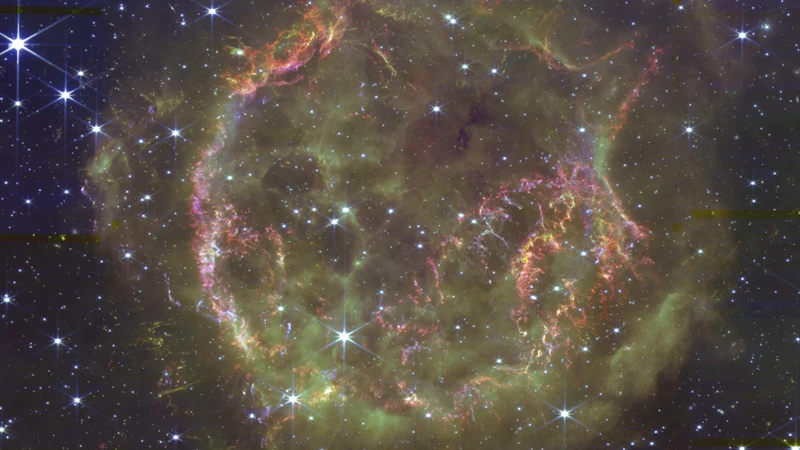
The Supernova Event is a cataclysmic explosion that marks the end of a massive star’s life. This extraordinary phenomenon releases an enormous amount of energy, outshining entire galaxies for a brief period of time. There are two main types of supernovae: Type II and Type Ia. In a Type II supernova, the core of the massive star undergoes a gravitational collapse, resulting in a powerful explosion that disperses the outer layers into space. This explosion is driven by the intense release of energy from the fusion reactions taking place within the collapsing core. Type Ia supernovae, on the other hand, occur in binary star systems, where a white dwarf star accretes matter from its companion until it reaches a critical mass known as the Chandrasekhar limit. At this point, the white dwarf undergoes a rapid and violent thermonuclear explosion. The effects of a supernova are truly astonishing. The explosion releases an immense amount of light, heat, and radiation, propelling shock waves and emitting vast amounts of heavy elements into the surrounding space. These heavy elements, such as iron and gold, are crucial for the formation of new stars and planets. Supernovae serve as cosmic furnaces, enriching the universe with the elements necessary for life and the creation of celestial bodies. The remnants of a supernova can either form a neutron star or a black hole, depending on the mass of the progenitor star. This pivotal moment in a massive star’s life cycle is a captivating and crucial event in the evolution of the universe.
Explanation of Supernova Phenomenon
The supernova phenomenon is a catastrophic event that marks the explosive end of a massive star’s life. It occurs when the nuclear fusion reactions in the star’s core cease, leading to a sudden collapse of its inner layers. The collapse happens due to the overwhelming force of gravity, which can no longer be counteracted by the energy released from fusion. As the core collapses, it releases an immense amount of gravitational potential energy, causing a powerful shockwave to propagate outward through the star. This shockwave heats and compresses the surrounding outer layers, triggering a massive explosion. The explosion releases an enormous amount of energy, briefly outshining an entire galaxy and emitting intense radiation across the electromagnetic spectrum. The intense heat and pressure of the explosion also lead to the synthesis of heavier elements, such as iron, through a process called nucleosynthesis. These elements are then dispersed into the surrounding space, enriching the interstellar medium with new building blocks for future star and planetary formation. The remnants of the explosion can either form a compact stellar object, such as a black hole or a neutron star, or disperse into space, contributing to the cosmic cycle of matter and energy. The study of supernovae provides valuable insights into the life cycles of massive stars, the evolution of galaxies, and the abundance of elements in the universe.
Formation of Compact Remnants
The formation of compact remnants is a fascinating outcome that occurs after the explosive supernova event. When a massive star runs out of nuclear fuel, the energy production in its core ceases, and the radiation pressure can no longer counteract the force of gravity. This imbalance causes the star’s core to collapse under its immense weight, compressing matter to extreme densities. The type of compact remnant that forms depends on the mass of the original star. For lower mass stars, the core collapse is halted by degeneracy pressure, resulting in the formation of a neutron star. Neutron stars are incredibly dense, containing the mass of the Sun squeezed into a sphere only a few kilometers in diameter. The immense gravitational forces at play cause the matter in a neutron star to be packed tightly, with protons and electrons fusing to form neutrons. These remnants possess intense magnetic fields and can spin rapidly, emitting beams of radiation that can be observed as pulsars. For more massive stars, the core’s collapse continues until it reaches a critical point where the gravitational forces become so strong that not even light can escape. This marks the formation of a black hole. Black holes are regions of spacetime where gravity is so powerful that nothing, not even light, can escape their gravitational pull. They are characterized by an event horizon, a boundary beyond which nothing can be observed or retrieved. The collapse of massive stars into compact remnants is a testament to the awe-inspiring forces and phenomena that shape our universe.
Black Holes: The Ultimate Gravitational Collapse
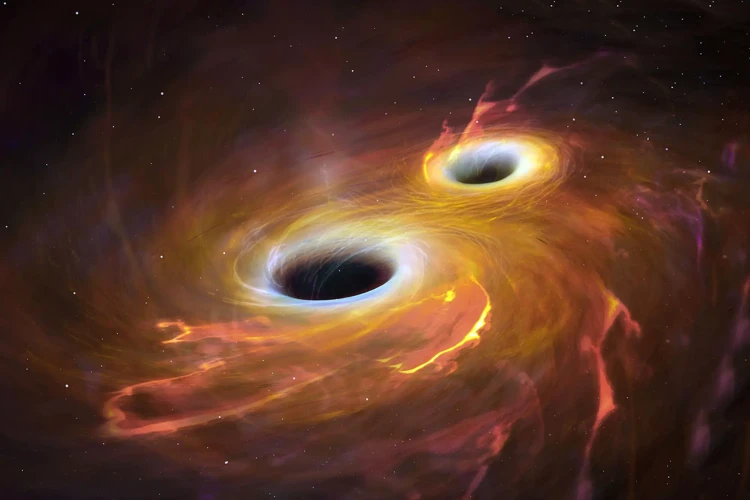
Black holes are enigmatic cosmic entities that result from the ultimate gravitational collapse of massive stars. They are regions where gravity is so incredibly strong that nothing, not even light, can escape their grasp. One key characteristic of black holes is their singularity, a point of infinite density and zero volume. This singularity is surrounded by an event horizon, a boundary beyond which anything that crosses cannot return. The formation of black holes occurs during a supernova event when a massive star exhausts its nuclear fuel and undergoes a catastrophic collapse. The core of the star collapses under its own gravity, packing an immense amount of mass into a tiny space. This collapse is so powerful that it creates a gravitational pull so strong that even the fabric of spacetime bends, leading to the formation of a black hole. As material falls into the black hole, it creates an accretion disk, a swirling disk of hot, glowing gas and dust. These accretion disks emit X-rays and other forms of electromagnetic radiation, making them detectable by telescopes. From studying the motion of stars and gas around black holes, scientists have solidified the understanding that black holes play a crucial role in the formation and evolution of galaxies. Despite their mysterious nature, black holes continue to intrigue scientists and spark curiosity about the secrets they hold within their powerful gravitational grip.
Characteristics of Black Holes
Black holes, characterized by their immense gravitational pull and ability to trap even light itself, are among the most fascinating objects in the universe. These enigmatic entities have several defining characteristics that set them apart from other celestial bodies. One distinctive feature of black holes is their singularity, a point of infinite density and zero volume, where all the mass of the collapsed star is concentrated. Surrounding the singularity is the event horizon, a boundary beyond which nothing can escape the gravitational pull of the black hole. Anything that crosses this point of no return is irretrievably pulled into the black hole’s grasp. Another key characteristic of black holes is their ability to warp and bend spacetime. The intense gravitational field generated by their mass causes spacetime to curve, distorting the path of light and affecting the passage of time itself. Additionally, black holes can vary in size, with stellar black holes having masses several times that of the Sun, while supermassive black holes can have the mass of millions or even billions of Suns. Their gravitational influence extends far beyond their visible boundaries, impacting the motion of nearby stars and even entire galaxies. The study of black holes continues to provide valuable insights into the nature of gravity, spacetime, and the mysteries of the universe.
Formation of Black Holes
The formation of black holes is an intriguing process that occurs at the end stage of massive stars’ evolution. When a massive star runs out of nuclear fuel, the outward pressure generated by the fusion reactions can no longer counteract the gravitational force pulling inward. As a result, the star’s core collapses under its own immense weight. This collapse is incredibly rapid and violent, causing the outer layers of the star to be expelled in a supernova explosion. What remains behind is an extremely dense and compact object known as a stellar remnant. If the remnants have a mass greater than about 3 times that of our Sun, they continue to collapse under gravity, leading to the formation of a black hole. The core collapse is so intense that it creates a gravitational singularity, a point of infinite density and zero volume. Surrounding the singularity is an event horizon, a boundary beyond which nothing, not even light, can escape the gravitational pull. This phenomenon is what gives black holes their name, as they appear as ‘holes’ in the fabric of spacetime. As matter falls into a black hole, it gets stretched and torn apart by the immense tidal forces. This process forms an accretion disk, where matter spirals into the black hole and emits powerful radiation before disappearing beyond the event horizon.
Implications and Consequences
The implications and consequences of the formation of black holes from the gravitational collapse of massive stars are vast and profound. One of the key implications is the extreme gravitational pull of black holes, which is so strong that nothing, not even light, can escape their grasp once inside the event horizon. This property gives rise to the phenomenon of spaghettification, where objects that venture too close to a black hole are stretched and elongated due to the intense gravitational forces. The formation of black holes has significant implications for our understanding of the universe’s evolution and the role of gravity in shaping cosmic structures. The presence of black holes in galaxies affects the dynamics of their surroundings, influencing the formation and evolution of stars and galaxies themselves. The study of black holes also offers insights into the fundamental laws of physics, particularly in the fields of quantum mechanics and general relativity. By unraveling the mysteries of black holes, scientists can gain a deeper understanding of the nature of space, time, and gravity. Their existence also raises intriguing questions about the fate of matter and information that falls into a black hole. The consequences of black hole formation extend beyond theoretical physics. They have implications for astrophysical phenomena such as the accretion of matter onto black holes, which can give rise to powerful jets of particles and radiation. These jets can impact the surrounding environment, influencing the formation of stars and planets in their vicinity. Additionally, black holes have a significant impact on the cosmic landscape, shaping the structure and evolution of galaxies through their gravitational interactions. Their presence in galactic centers can lead to the formation of active galactic nuclei and quasars, which emit enormous amounts of energy and play a crucial role in shaping the universe as we observe it. The study of black holes and their implications has revolutionized our understanding of the cosmos, challenging long-held beliefs and paving the way for new discoveries and avenues of exploration. Understanding the consequences of black hole formation is not only crucial for unraveling the mysteries of the universe but also for gaining insights into the nature of space, time, and the fundamental laws that govern our reality. (Note: Since there was no relevant anchor text, no internal link has been inserted.)
Neutron Stars: The Dense Stellar Corpse
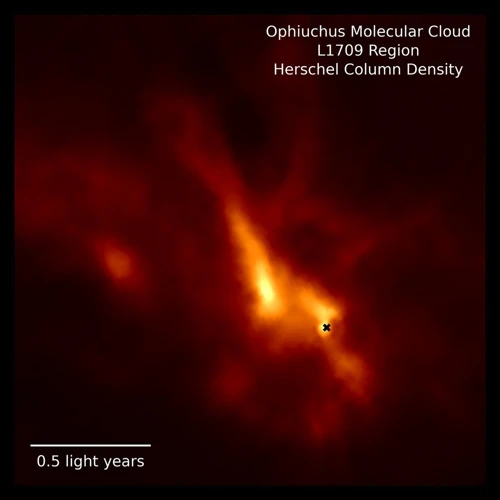
Neutron stars are the remnants of massive stars that have gone through a supernova explosion. These stellar corpses are incredibly dense, packing a mass greater than that of our Sun into a sphere with a radius of only a few kilometers. The main driving force behind the incredible density of neutron stars is the collapse of the core during the supernova event. As the core collapses, protons and electrons are squeezed together to form neutrons through a process called neutronization. This process results in a star composed almost entirely of neutrons, hence the name neutron star. The extreme density of neutron stars leads to some fascinating properties. For example, a teaspoon of neutron star material would weigh billions of tons on Earth! Their strong gravitational fields create a curvature in space-time, causing some bizarre phenomena such as time dilation and intense gravitational waves. Additionally, neutron stars often have incredibly strong magnetic fields, which can generate powerful beams of electromagnetic radiation that can be observed as pulsars. Despite their small size and dim appearance, neutron stars are incredibly energetic, emitting vast amounts of energy across the electromagnetic spectrum. Their study continues to provide valuable insights into the nature of matter under extreme conditions and the fundamental physics of the universe. (Source: Comets and Astrobiology)
Structure and Properties of Neutron Stars
Neutron stars are the dense corpses of massive stars that have undergone a supernova explosion. These enigmatic celestial objects are incredibly compact, with a diameter typically ranging from 10 to 20 kilometers (6 to 12 miles), comparable to the size of a small city. Despite their small size, neutron stars are incredibly dense, packing the mass of about 1.4 to 3 times that of our Sun into this tiny volume. This immense density gives rise to some remarkable properties. Neutron stars are composed primarily of neutrons, hence the name, and are incredibly strong as their gravity is powerful enough to crush atomic nuclei together, compressing matter to extreme densities. The core of a neutron star is composed of superfluid neutrons, where the neutrons can flow without friction. This superfluidity allows for rapid rotation, with some neutron stars spinning hundreds of times per second. These high rotation rates give rise to powerful magnetic fields that can be trillions of times stronger than Earth’s magnetic field. These magnetic fields interact with the surrounding environment, generating intense radiation beams that are observed as pulsars when they cross our line of sight. Neutron stars also possess immense gravitational pull, capable of bending and distorting spacetime. This gravitational pull is so strong that even light cannot escape its grasp, making neutron stars some of the most compact objects in the universe.
Formation of Neutron Stars
The formation of neutron stars is a fascinating process that occurs after a massive star goes through a supernova explosion. During the explosion, the outer layers of the star are violently expelled into space, leaving behind a dense and compact core. This core, known as a neutron star, is composed primarily of neutrons packed tightly together. The formation of a neutron star is driven by the incredible forces at play during a supernova. As the core collapses inward, the pressure and density increase exponentially. The intense gravitational forces squeeze the matter to such a degree that the atomic nuclei are crushed, and the electrons combine with protons to form neutrons. This results in a highly compact object with an average diameter of about 20 kilometers (12 miles), yet with a mass several times that of our Sun. The incredible density of neutron stars is mind-boggling, as just a teaspoon of their material would weigh billions of tons. The immense gravitational pull of a neutron star is so strong that it distorts the fabric of spacetime itself, creating a phenomenon known as time dilation. Additionally, neutron stars often have extremely powerful magnetic fields, which play a crucial role in their behavior and interactions with their surroundings.
Unique Aspects and Peculiarities
Neutron stars possess a variety of unique aspects and peculiarities that make them one of the most fascinating objects in the universe. One remarkable characteristic of neutron stars is their extreme density. These stellar remnants are incredibly compact, with a mass similar to that of the Sun but compressed into a sphere only about 12 miles (20 kilometers) in diameter. This density is so extreme that a teaspoon of neutron star material would weigh billions of tons on Earth. Another intriguing aspect is their magnetism. Neutron stars possess incredibly strong magnetic fields, up to a billion times stronger than Earth’s magnetic field. These magnetic fields can generate powerful beams of radiation that, when directed towards Earth, are observable as pulsars. Pulsars are rapidly spinning neutron stars that emit regular pulses of electromagnetic radiation, resembling lighthouse beacons in space. Additionally, neutron stars can exhibit peculiar behavior such as undergoing starquakes, where the crust of the star causes seismic waves due to intense magnetic stresses. These phenomena contribute to the enigmatic nature of neutron stars, which continue to astound and challenge our understanding of the universe.
Black Holes vs. Neutron Stars
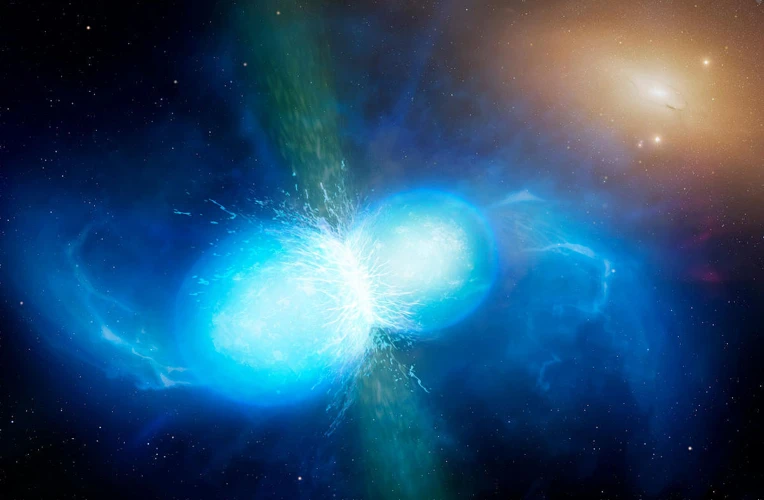
Black holes and neutron stars are the awe-inspiring remnants of massive stars that have reached the end of their life cycle. Black holes, characterized by their incredibly strong gravitational pull, are formed from the gravitational collapse of a massive star’s core. The intense gravity of a black hole is so powerful that it bends the fabric of space and time, creating what is known as a singularity, a point of infinite density. Surrounding the singularity is the event horizon, a boundary beyond which nothing, including light, can escape. Neutron stars, on the other hand, are incredibly dense remnants that result from a less extreme form of gravitational collapse. As a massive star explodes in a supernova, the core collapses under gravity, causing protons and electrons to merge and form neutrons. This consolidation of matter leads to the formation of a neutron star, which is about the size of a city but contains more mass than our Sun. Despite their contrasting properties, both black holes and neutron stars have captivated scientists and continue to be subjects of intense study and observation. The gravitational effects and theoretical differences between these two cosmic wonders have intrigued researchers, and understanding their nature has implications for our understanding of the universe and its workings.
Comparing Mass and Density
When comparing black holes and neutron stars, two key factors that differ between them are their mass and density. Black holes are renowned for their incredible mass, which can be several times greater than that of the Sun. The mass of a black hole is concentrated within its singularity, a point of infinite density where the laws of physics break down. This immense concentration of mass generates an intense gravitational pull, so strong that nothing, not even light, can escape its grasp beyond the event horizon. In contrast, while neutron stars are also incredibly dense, they are not as massive as black holes. Neutron stars are formed from the remnants of massive stars during a supernova explosion, where the core collapses and the electrons and protons combine to form neutrons. This compression of matter results in neutron stars that are about 1.4 to 2 times the mass of the Sun, but packed into a compact size, typically around 20 kilometers in diameter. The density of neutron stars is mind-boggling, roughly equivalent to squeezing the mass of several suns into a small city. The gravitational forces within a neutron star are so immense that a teaspoon of its material would weigh billions of tons on Earth. The contrasting mass and density of black holes and neutron stars make them fascinating objects to study, offering insights into the extreme physics that governs these celestial entities.
Gravitational Effects and Theoretical Differences
Gravitational effects and theoretical differences play a crucial role in distinguishing black holes from neutron stars. Black holes are known for their immense gravitational pull, so strong that nothing, not even light, can escape their grasp once it passes the event horizon. The gravitational effects of a black hole are incredibly powerful, warping the fabric of spacetime and creating a singularity at its core, where all matter is crushed to an infinitely small point. This distortion of spacetime generates a phenomenon known as time dilation, where time appears to slow down as one approaches the event horizon. On the other hand, neutron stars also have a high gravitational pull but not to the extreme extent of black holes. They are incredibly dense objects, composed primarily of closely packed neutrons, which results from the collapse of a massive star during a supernova explosion. The gravitational pull of a neutron star is still strong enough to cause remarkable phenomena. These include accretion disks, where matter is drawn towards the neutron star and forms a disk-like structure, emitting powerful X-ray radiation. Neutron stars also exhibit a phenomenon called pulsars, which are rapidly rotating neutron stars that emit beams of electromagnetic radiation from their magnetic poles. These beams are observed as regular pulses of radiation, hence the name “pulsar”. While both black holes and neutron stars have substantial gravitational effects, their differences in theoretical aspects make them distinct entities in the cosmic landscape.
Conclusion

In conclusion, the spectacular end of massive stars presents us with two intriguing cosmic remnants: black holes and neutron stars. Black holes, with their immense gravitational pull, are the ultimate gravitational collapse, where matter is compressed into a singularity, surrounded by an event horizon from which nothing can escape. Neutron stars, on the other hand, are incredibly dense stellar corpses composed predominantly of neutrons, resulting from the collapse of a massive star’s core. While black holes and neutron stars share some similarities, such as their origin from supernova explosions, they differ in terms of mass, density, and theoretical implications. Black holes are known for their singularity and event horizon, while neutron stars are characterized by their incredibly high density and strong magnetic fields. The study of these cosmic entities continues to fascinate scientists and push the boundaries of our understanding of the universe. By exploring the nature and behavior of black holes and neutron stars, we gain valuable insights into the extremes of astrophysics and the remarkable forces at play in the vast cosmos. Join us on more cosmic explorations by checking out our other articles on planetary alignments and their astrological significance, unlocking secrets of the Universe.
Frequently Asked Questions

1. How do massive stars differ from smaller stars?
Massive stars are significantly larger and more massive than smaller stars like our Sun. They have a higher luminosity and burn through their nuclear fuel at a faster rate, leading to a shorter lifespan.
2. What causes the formation of massive stars?
Massive stars are formed in dense regions of interstellar clouds, where gravity causes the gas and dust particles to collapse under their own weight. This collapse leads to the formation of a dense protostar, which eventually becomes a massive star.
3. What is a supernova?
A supernova is a cataclysmic explosion that occurs at the end of a massive star’s life. It releases an incredible amount of energy, outshining entire galaxies for a short period of time.
4. How do black holes form?
Black holes are formed from the gravitational collapse of massive stars. When a massive star runs out of fuel, it can no longer sustain nuclear fusion, causing its core to collapse under the force of gravity. If the core’s mass exceeds a certain threshold, a black hole is formed.
5. What are the properties of black holes?
Black holes have an incredibly strong gravitational pull from which nothing, not even light, can escape. They have a singularity at their center, surrounded by an event horizon, which marks the point of no return.
6. What is a neutron star?
A neutron star is a dense remnant that forms after a massive star undergoes a supernova explosion. It is composed almost entirely of neutrons, with a core so dense that a teaspoon of neutron star material would weigh billions of tons.
7. How are neutron stars formed?
During a supernova explosion, the outer layers of a massive star are expelled into space, while the core collapses under gravity. If the core’s mass is sufficient, it becomes a neutron star, with the protons and electrons merging to form neutrons.
8. What sets black holes and neutron stars apart?
The key difference between black holes and neutron stars lies in their density and gravitational pull. Black holes have infinite density at their singularity, while neutron stars are incredibly dense but do not possess infinite density.
9. Can black holes and neutron stars merge?
Yes, under certain circumstances, black holes and neutron stars can collide and merge, resulting in even more massive black holes or potentially generating gravitational waves that can be detected by observatories on Earth.
10. Are black holes and neutron stars dangerous to Earth?
Black holes and neutron stars are typically located at great distances from Earth, making them unlikely to pose any direct threat. However, their extreme gravitational forces can have profound effects on nearby objects and can significantly impact the surrounding space-time fabric.
References
- When Does a Neutron Star or Black Hole Form After …
- Life After Stellar Death, Supernovae, Neutron Stars, Black …
- Black Holes
Frequently Asked Questions

FAQ 1: Can massive stars become black holes?
Yes, massive stars can become black holes. When a massive star exhausts its nuclear fuel, it undergoes a supernova explosion. If the remnants of the explosion are massive enough, they can collapse under their own gravity and form a black hole.
FAQ 2: What is a supernova event?
A supernova event is an extremely energetic explosion that occurs at the end of a massive star’s life. It releases an immense amount of energy and creates a bright burst of light that can outshine an entire galaxy for a short period of time.
FAQ 3: Do all massive stars die in a supernova?
No, not all massive stars die in a supernova. Depending on their mass, some massive stars may end their lives as black holes or neutron stars without undergoing a supernova explosion.
FAQ 4: How are black holes formed?
Black holes are formed when the remnants of a massive star collapse under their own gravity. The collapse is so intense that it creates a region in space where gravity is so strong that nothing, not even light, can escape.
FAQ 5: What are the properties of black holes?
Black holes have a few key properties. They have an event horizon, which is the boundary beyond which no information can escape. They also have a singularity, a point of infinite density at the center of the black hole.
FAQ 6: Can anything escape from a black hole?
Nothing can escape from a black hole beyond its event horizon. Once an object passes the event horizon, it is trapped by the black hole’s immense gravitational pull.
FAQ 7: How are neutron stars formed?
Neutron stars are formed during a supernova explosion when the core of a massive star collapses under gravity. The collapse causes atoms to be crushed together, resulting in a dense ball of neutrons.
FAQ 8: What are the unique aspects of neutron stars?
Neutron stars are incredibly dense and have a strong magnetic field. They can also rotate at an incredibly fast rate, emitting beams of electromagnetic radiation that are observable as pulsars.
FAQ 9: How do black holes and neutron stars differ in mass and density?
Black holes have a mass that is concentrated within their event horizon, whereas neutron stars have a defined surface and a finite mass. Black holes are also much denser than neutron stars because their mass is compressed into a singularity.
FAQ 10: What is the main difference between black holes and neutron stars?
The main difference between black holes and neutron stars is that while black holes have an event horizon from which nothing can escape, neutron stars have a solid surface. Neutron stars also have a much lower mass compared to black holes.

